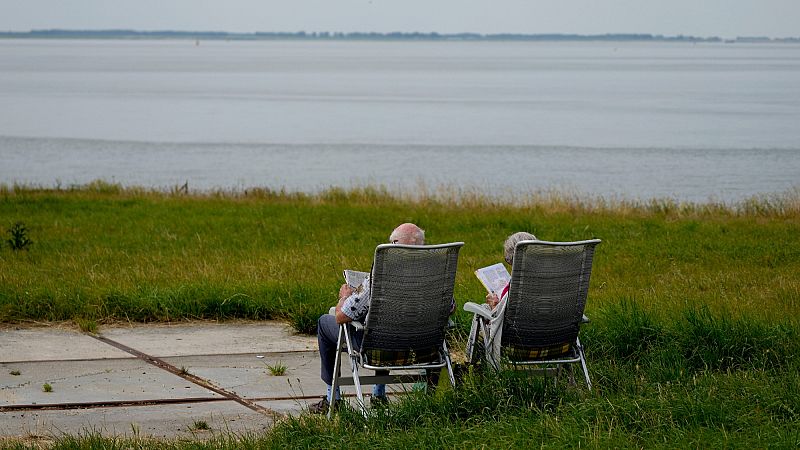
Poor Europeans can expect to live at least as long as rich Americans, and in some cases even longer, a new study has found.
How healthy people are and how long they live is often tied to how much money they have, with wealth boosting people’s access to education, good jobs, nutritious food, and medical care.
But even the poorest people in countries like the Netherlands and France tend to live longer than wealthy Americans, according to new research published in the New England Journal of Medicine.
The analysis included nearly 74,000 people in the US and 16 European countries who were between 50 and 85 years old in 2010, and tracked their survival through 2022.
Europeans were split into three groups: northern and western Europe (which included Austria, Belgium, Denmark, France, Germany, the Netherlands, Sweden, and Switzerland); southern Europe (Italy, Portugal, and Spain); and eastern Europe, which spanned the Czech Republic, Estonia, Hungary, Poland, and Slovenia.
Across all groups, the US death rate was 6.5 per 1,000 during the study period. That compares with rates of 2.9 in northern and western Europe, 4.9 in southern Europe, and 5.8 in eastern Europe.
The relationship between health and wealth
While there’s a link between wealth and survival everywhere, the health gap between the richest and poorest was wider in the US than in any European country, the study found.
The poorest Americans had the lowest survival rates across the board, and tended to die younger than their counterparts in Europe.
But even the wealthiest Americans were worse off than many Europeans.
Wealthy Americans had lower survival rates than rich people in southern Europe – as well as everyone in northern and western Europe, regardless of how wealthy they were, the study found.
The survival rate for wealthy Americans was on par with the poorest people in northern and western Europe, and with eastern Europeans overall.
“The findings are a stark reminder that even the wealthiest Americans are not shielded from the systemic issues in the US contributing to lower life expectancy,” said Irene Papanicolas, a health economist at Brown University in the US which led the study.
Americans and western Europeans tend to have more cash than their counterparts elsewhere, the researchers noted, but the relationship between wealth and health is about more than just the size of someone’s bank account.
Instead, it matters how wealthy someone is compared to their fellow citizens. The wealth gap in the US is more extreme than in almost any other developed country, while it also has “weaker social structures” and limited healthcare access, according to the study.
This could help explain why the mortality gap is greater between wealthy and poor Americans, and why the poorest people in the US have lower survival rates than the poorest people in Europe, the researchers said.
“Fixing health outcomes is not just a challenge for the most vulnerable – even those in the top quartile of wealth are affected,” said Sara Machado, one of the study’s authors and a researcher at Brown University.
Role of social infrastructure
The study did not compare the European countries, but the better outcomes for poorer people in northern and western Europe likely reflects the strength of welfare programmes there, according to Dr Martin McKee, a professor of European public health at the London School of Hygiene and Tropical Medicine and former president of the European Public Health Association (EUPHA).
“This is a strong argument that a welfare state benefits everybody [including] those who would consider themselves at least middle class,” McKee, who was not involved with the study, told Euronews Health.
Across all countries, the researchers accounted for factors like gender, marital status, education level, whether someone lived in a rural or urban area, smoking status, and whether they had an existing health issue such as cancer or diabetes.
That helped them home in on the direct link between wealth and survival over time. But other factors that they did not measure, such as race and ethnicity, could also play a role.
They also only divided people into four groups, which could mask even more extreme results for the wealthiest and poorest people, McKee said.
“The real issue in both Europe and the US is the increasing number of people in the top 1 to 2 per cent, not only the top 25 per cent [of wealth],” McKee said, meaning the study “probably underestimates the scale of the problem”.
Even so, the study authors said the US could look across the Atlantic if it wants to boost life expectancy and well-being for Americans across the spectrum.
“If you look at other countries, there are better outcomes, and that means we can learn from them and improve,” Machado said.







